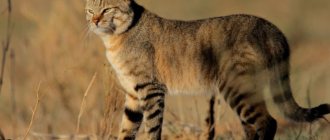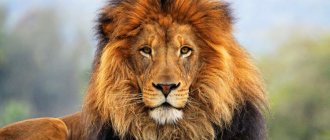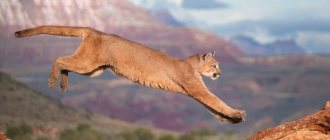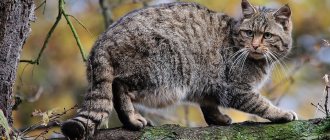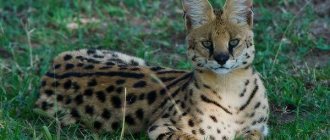Back in the century before last, these cats from the Panther family reigned over the lands of the Far East and adjacent territories of China. The Amur tiger is a unique animal adapted to life in cold climates.
For centuries, nature has created an ideal predator that survived in difficult conditions, but man quickly dealt with a large population of beautiful animals.
Ussuri tigers are on the verge of complete extinction and perhaps you would only see them like mammoths in pictures. In the middle of the last century, urgent measures were taken to preserve a sufficient number of individuals and restore the population of Far Eastern predators in the future.
Habitat
The most famous and at the same time the smallest, spectacular inhabitant of the Far East, alas, you cannot simply meet in the forest. The extermination of this noble animal has brought the entire species to the brink of extinction, so you can only admire the striped animal within zoos.
The main zone of life of the animal is the Amur region; local peoples even came up with their own name for tigers, so as not to “scare them away”; they call them “amba”. The hunting grounds of Amur tigers occupy the banks of the Amur and Ussuri, now these are protected areas allocated from the lands of the Primorsky Territory and the southern parts of the Khabarovsk Territory.
An impressive part of the wild population settled in the protected mountains of Sikhote-Alin. In the future, it is planned to expand the range to include the reserves of Yakutia; in the future, it is planned to return the Ussuri tigers to the lands where they lived before the extermination began.
A small number of tigers have found a home in Chinese Manchuria; there are several dozen individuals here. Some animals live in the border zone of the two countries. Some individuals live in zoos around the world; a small group of northern animals has taken root in the Crimean Taigan Park.
The favorite home of Amur tigers is rocky mountains covered with forest, rugged with caves and ledges. The offspring grow up in the caves, and adult animals use the ledges for resting and tracking potential prey.
Number
In wild nature
At the end of the 19th century, up to 100 animals were killed annually, and in 1912 - about 60 individuals. The predator's population declined until about 1940, when, presumably, only 30-40 individuals remained. In 1958-1959, about 100 individuals were counted (65 in Primorsky and 35 in the Khabarovsk Territory), in 1964 - 120, in 1968 - 140, in 1970-150, in 1978-200, of which 8-10 individuals in Sikhote-Alin Nature Reserve and about 15 adult tigers in the Lazovsky Nature Reserve[5]. In total, in Russia in 1996 there were about 415-476 individuals. About 10% (30 individuals) of the Amur tiger population lives in China (Manchuria) [ source not specified 901 days
].
According to a one-time census in 2005, the number of Amur tigers in the south of the Russian Far East was 423-502 individuals[6] (or 334-417 adult tigers and 97-112 cubs[7]). In April 2013, the number of tigers in the Far East was estimated at 450 individuals[8]. And according to the 2020 tiger census, there are 523-540 Amur tigers in the Russian Far East[9]. This is neither more nor less. This is exactly as much as the still uncut areas of the Ussuri taiga can accommodate. There are plans to resettle the tiger within its historical range, that is, to return it to the places where it once lived, but was then exterminated. Thus, the number of tigers can increase to 750. However, this is only possible due to an intensive increase in the number of ungulates[10].
Taigan Park
A separate population of Amur tigers has been formed in Crimea, in the Taigan safari park, which breeds, raises and distributes this subspecies of tiger throughout Russia[11][12]
Appearance, dimensions and weight
This is the largest species of tiger on our planet. What distinguishes Ussuri tigers from their counterparts living in more comfortable conditions is their thick fur with dense undercoat and a five-centimeter fatty layer in the peritoneum.
Dense wool and a layer of fat form a kind of protective shield that protects the animal from hypothermia. After all, this type of tiger has to live in extreme cold, tracking prey through deep snow for hours.
The unkind climate of the Far East is even reflected in the shape of the animal’s ears; they are small and neat. Much smaller than other types of tigers. The paws are not long, but they are massive and wide, adapted for movement in snowdrifts, taking into account the considerable weight of the “owner”.
But the height and weight sharply distinguishes the Amur tiger from its relatives. Their massive bodies make them excellent hunters and allow them to survive in cold mountain weather. Scientists came across individuals whose bodies stretched to almost three meters, and whose tail length reached 110 cm.
The gigantic weight, usually reaching 300 kg, is due to the developmental characteristics of these tigers; they grow and mature throughout their lives. According to unconfirmed reports, people have encountered individuals in nature that have grown to 390 kg.
Modern research has established that in the current population of tigers, the weight of a male does not exceed 177 kg, while tigresses “fat” only 118. Most likely, the reduction of animals is caused by a small number of individuals. As a result of these changes, Ussuri tigers began to “lose” in numbers to their Bengal relatives.
The Amur tiger is one of the most beautiful “cats” on the planet; the brightness of its color depends on the time of year. The most spectacular outfit, an orange fur coat with dark stripes and a white belly, appears in the summer. In winter, the color is a little paler, but this does not make the tiger any less beautiful.
Black stripes are a camouflage element for a predator. Their design is completely unique; it is impossible to find two identical animals. The black and white ears of the females act as a beacon for the tiger cubs, following their mother through the snowy forest.
Description of the Amur tiger
The Amur tiger class is mammal. It is one of the largest predators of the fauna of the entire planet. Its weight can even exceed 300 kg. And according to some sources, individuals weighing up to 390 kg have been identified, but today it is quite difficult to meet such large representatives of Amur tigers. The body length is on average 1.6 - 2.9 m, and the tail length is 1.1 m.
These animals are an adornment of the Far Eastern taiga, as well as objects of worship for numerous peoples. The Amur tiger is depicted on the flag and coat of arms of the Primorsky Territory and on other various symbols of many cities and regions of this region.
The beast has enormous physical capabilities: it can easily carry a huge horse carcass weighing half a ton. Its speed reaches 80 km/h, second only to cheetahs in this indicator.
The Amur tiger has a beautiful skin color characteristic of a predator: against a red background there are transverse dark stripes on the back and sides. There is an opinion that it is impossible to meet at least two individuals with the same pattern, because they are all unique. This color, although bright, serves a camouflage function.
Due to its size, the tiger does not have stamina. To catch prey, he has to sneak up to it as close as possible, which is helped by the color, which merges with the dry grass.
Look at the photo of the Amur tiger and you will see for yourself. On average, these tigers live about 15 years. Although the maximum lifespan is half a century, tigers, as a rule, die before their old age.
Predators feed only on animal food, most often large-sized prey. They devote a significant part of their time to hunting, but only a tenth of attempts to capture prey are successful.
Manchurian deer, wild boar, and sika deer are the main part of the animal's diet. For the full existence of an individual, they need more than 50 ungulates per year.
If this indicator is insufficient, predators can also hunt smaller animals (badgers, dogs, livestock, etc.). A tiger can handle 30 kg of meat at a time, and its daily norm is about 10 kg.
Like most felines, the Amur tiger prefers a solitary lifestyle. Throughout its existence, the individual chooses a certain area of territory for itself, beyond which it goes only when necessary to search for food. The tiger leaves special marks on its personal territory:
- Splashing urine on rocks or trees;
- Scraping on plots of land;
- With the help of its claws, the tiger rips off the bark from trees.
An adult male defends his territory from unexpected guests, and can sort things out with other individuals by roaring. Males rarely get into fights. However, these quiet animals can remain mostly quiet for several years.
Predators reproduce on average once every 2 years. Males are polygamous animals that can accommodate several females on their territory at once. And in case of competition with other males, they are even able to engage in battle with opponents.
Behavior and lifestyle
Male Ussuri tigers are solitary in life, and also very conservative, constantly moving around their very vast lands. The male's will have almost twice the area of the female's. If the lands are full of game, then the tiger will never leave the territory it once occupied in its entire life.
Tigers carefully mark their hunting grounds, additionally leaving noticeable branches on the trees (the height exceeds human height). Animals once lay out a network of paths for themselves, along which they constantly move, without changing their route for years.
Continuous movement is the basis of their life; in fifteen years (that’s how long they live in the natural environment), a tiger travels thousands of kilometers through mountains and forests.
This is a nocturnal animal that prefers to rest during the daytime. And Amur tigers see at night several times better than in daylight. The meeting of two tigers is accompanied by loud “sighs” and ritual contact of heads and sides.
Females often gather in groups; such tiger families include small cubs and adolescents who are not yet ready for reproduction and independent life. The Ussuri tiger is considered an adult from the age of five, and until that moment sons and daughters learn the art of hunting and survival from their mother.
SPADILO.RU
The Amur tiger is a treasure of Russian wildlife. It lives in a small area of the Primorsky and Amur Territories, which is why it is called that. The tiger is a large representative of the cat family. The skin is colored orange with longitudinal black stripes. The fur on the belly is white, the tip of the tail is always black. Each tiger has a unique color that is never repeated. The head of a wild cat is round, short ears do not freeze in cold weather, the body is flexible, the tail is long, and the paws are wide.
Capable of accelerating up to 80 km/h, its powerful jaws easily crush bones. Bears often become prey for tigers. In winter, the skin becomes lighter, thicker and fluffier. Body length up to 3 meters, height slightly higher than a meter, weight exceeds 200 kg. Compared to the lion, the tiger is the largest predator of the cat family.
Habitat
The Amur tiger lives in the north, in the taiga, near the Amur and Ussuri rivers, among dense vegetation of coniferous trees. Adult males live in a personal territory of up to 2 thousand sq.m., females up to 450 sq.m. It is not afraid of cold weather thanks to a fat layer of 5 cm. Its habitat extends from north to south for 1000 kilometers, and from west to east for 700 kilometers. Some animals live in nature reserves and national parks. The territory is guarded by inspectors who care for the injured tigers. Wild cats do not live in enclosures and can move freely.
Lifestyle
In nature, they live in one place for a long time. They fence off the area with smelly branches and claw marks in the trees. If a stranger comes in, a fight ensues. Lack of food encourages the search for a new home.
They hunt wild boar, deer, lynx, and elk. The best time for hunting is at night, because any cat sees perfectly in the dark. A tiger needs to eat up to 10 kilograms of meat per day. When the hunt does not work out, the animal can eat fish, frogs, and mice. If a tiger catches prey, it drags it to the water. Having had enough, it hides the remaining food until the next time. The tiger on the Amur is often hungry, but it never attacks a person first.
Offspring
Life expectancy is approximately 18 years, in reserves - up to 25. By their nature, Amur tigers are solitary. They spend two days with the female; the male does not participate in raising the offspring. They begin to reproduce at the age of 4-5 years, once every two years. The female bears the offspring for 90-112 days. 3-4 individuals are born at a time, weighing no more than a kilogram. The tigress feeds the newborns for six months. On the 9th day the eyes open, on the 14th day teeth appear. At 2 months they go out into the world for the first time and their weight doubles. At six months they grow to the size of a large dog and begin to eat only meat. Little tigers become independent at 2.5-3 years. When the cubs grow up, the tigress begins to live a separate life.
Why is it listed in the Red Book?
Amur tigers are the smallest of all other animals on earth. The main reason for the disappearance is hunters and poachers. 100 tigers die a year. There is also a shortage of food sources; humans are destroying the habitats of animals.
In the mid-19th century, the peoples of the Far East considered the Amur tiger to be the master of the taiga. The number of individuals reached 1000 individuals. A new wave of settlers began hunting tigers in order to get a beautiful skin. In 1930, the population dropped to 100 individuals. In this regard, measures were taken: the first reserves were opened; Hunting was banned in order to restore and preserve the species. Therefore, the Amur tiger is included in the Red Book of the Russian Federation, and a national program for the conservation of the species has been developed. Is protected by law.
Previously, the owner of the taiga had endangered status. At the beginning of the 21st century, the number increased significantly; today there are 500 individuals.
Nutrition
The Amur tiger is the main predator of the Far East, dominating the food chain of the region. For a normal life, an animal needs to eat ten kilograms of meat per day. But at one time he can consume three times the norm.
The main diet of this predator consists of:
- wapiti;
- roe deer;
- spotted deer;
- lynx;
- wild boars
If there are not enough large animals, the Ussuri tiger switches to smaller and more accessible prey. Its “menu” includes:
- badgers;
- raccoon dogs;
- livestock (and the owner's dogs);
- birds,
- mice,
- frogs.
The Ussuri tiger is also an avid fisherman; life on the banks of deep rivers has taught these animals to catch large fish that go to spawn through river rifts in the mountains. So during this period, the animal’s diet is supplemented with tasty fish.
In case of a successful hunt, the animal drags away the carcass (it can drag a weight of up to 500 kg) and tears it apart, holding the dinner with its paws. The meat that is not eaten is kept in reserve, hiding it from the encroachments of other applicants.
Fat reserves allow tigers to fast for a whole week, surviving days of unsuccessful hunting. But in the event of a particularly snowy winter and lack of food, the animals die from lack of food.
External description
This predatory animal has a very characteristic appearance, making it difficult to confuse it with any other animal. The external description of the Amur tiger reveals that it is a subspecies adapted for life in cold weather. In particular, he has very thick fur, and on his stomach there is a five-centimeter layer of fat that protects the big cat from frost and allows him to sleep comfortably in the snow. In addition, it is characterized by the following features:
- Massive sizes. The body length of this predator is up to 280 cm, the height at the withers is 115 cm, and the weight of the Amur tiger reaches 320 kg. However, most specimens are much smaller - the average weight of a male is 190 kg, and that of a female is 160 kg. Old sources contain information about animals weighing 390 kg or more, but now such specimens are not found. Scientists believe that the decrease in their size is the result of human activity.
- A large head, powerful jaws and long – up to 8 cm – sharp fangs. The muzzle is not very elongated, but not flattened either; long sideburns can be seen on its sides. The eyes are small, deep-set, and their color is yellow or green. The pupils are round. The mustache is long, thick and elastic. The ears are small and rounded at the tips. They are covered with white fluff on the inside and black fur on the outside.
- Muscular, massive and heavy build. The body is elongated. Despite its size, the tiger's body remains flexible and graceful, like that of all cats. The forelimbs of a predator are larger and heavier than the hind limbs.
- The tail is wide at the base, but gradually tapering towards the end. Its length is from 75 to 100 cm. Like domestic cats, tigers use their tail as a tool to demonstrate their mood.
- Thick fur, the length of which reaches 2-3 cm in summer and 5-10 cm in winter. Its color is reddish-red, changing to ocher-yellow in the cold season. The belly, chest and inner surface of the paws are white, and there are also characteristic light markings on the muzzle. The entire body from the neck to the tip of the tail is covered with black stripes of varying lengths and widths. Their total number is somewhat less than that of other subspecies. The pattern is individual for each individual and is better visible in summer.
The appearance of the Amur tiger gives the impression of a proud and strong predator, posing a great danger to humans. But, despite its size and weight, it is much less aggressive than the Bengal or Ussuri subspecies.
Assault on a person
The press loves to scare readers with chilling stories about man-eating tigers, but the stories have nothing to do with the Ussuri tigers. These animals prefer to stay as far as possible from humans and their homes. The exception is livestock during years of total starvation.
The Amur tiger avoids humans on the tenth road, attacking only wounded and dying individuals. Even in the case of a targeted hunt, the fleeing animal will prefer to move away rather than attack in response.
However, attacks on people were officially recorded; over the forty-year history of observations, tigers showed aggression 19 times. The reasons were protection of babies, prey, or provocation from humans. The tigers killed two people, and other participants in the conflict were injured.
The main cause of conflict between humans and tigers are attacks on grazing cattle and dogs guarding houses and pastures. But in this case, the instigators of the hunt for the beast are people.
In heraldry
The Amur tiger is depicted on the flag and coat of arms of the Primorsky Territory, as well as on many heraldic symbols of cities and regions of the region. Also, the Amur tiger is depicted on the coat of arms of the city of Khabarovsk, the coat of arms of the Jewish Autonomous Region and was depicted on the coat of arms of the Khabarovsk Territory.
Previously [ when?
] the tiger was also depicted on the coat of arms of Irkutsk, but when the coats of arms of the provinces were approved by Emperor Alexander II, a description of the coat of arms of the Irkutsk province with the Siberian word “babr”
(tiger)
, which was “corrected” by the heraldry official to “beaver”.
Due to the fact that the description now read “ a beaver carrying a sable in its teeth
,” that is, the beaver was supposed to be in the role of a predator, the coat of arms began to depict a fictional black animal with a large tail and webbed hind feet.
This image has been preserved on the modern coats of arms of Irkutsk and the Irkutsk region, despite the fact that the error in the description has already been corrected. For more details, see the articles Babr, Coat of Arms of the Irkutsk Region.
Reproduction
The search for a partner is not tied to the time of year; it is determined by the “biological clock” of a particular female. The female lures the male with the smell of urine and marks on the trees. Sometimes she has to walk for a long time across the open spaces in search of at least some candidate for husband.
The couple spends several days together, then the male leaves his lady, going in search of a new female. Offspring can be expected after 95 days, sometimes the period is extended for another two weeks. As a result, three or four small blind lumps are born, still devoid of teeth. A dry cave usually serves as a refuge for mothers and babies.
They are provided with mother's milk from the first minutes until the age of six months. Two-month-old babies are already showing curiosity and beginning to explore the world outside the cave walls.
At this age, their diet is supplemented by prey brought by their mother. Tiger cubs receive their first hunting lessons at six months of age, accompanying the tigress. The first birthday is a great opportunity to get meat yourself; it is from this period that babies become independent hunters.
Two-year-olds are already trying their hand at going out to hunt fairly large prey. But even in the case of a positive experience, they remain close to their mother and other “children” for another three years. And only at the age of five do they begin to develop their own hunting grounds.
Hunting for the Amur tiger and its protection
In China, there is only one punishment for a person who attempts the life of a Ussuri tiger - execution. On the territory of Russia, it is under protection; in order to revive the livestock, a ban has been imposed on the shooting of animals that serve as food for tigers.
Tigers are under the protectorate of the World Wildlife Fund, individuals living in the wild are protected, and there are programs for breeding Amur tigers in captivity.
Scientists monitor their animals wearing signal-transmitting collars and study their hunting trails and movements. The bulk of scientific work on tiger conservation is carried out in vast areas of the Amur region.
Hunting of Ussuri tigers has been strictly prohibited since 1947, and Russia has also passed a number of laws to prevent the hunting of rare tigers. As part of the restoration of the population, a number of organizations have been created to breed animals that serve as food for Amur tigers and monitor the condition of the reserves.
Phylogenetic relationship to the Turanian tiger
At the beginning of the 21st century, researchers from the University of Oxford, the US National Cancer Institute and the Hebrew University of Jerusalem collected tissue samples from the remains of 23 Turanian tigers, which are kept in museums across Eurasia. Scientists have sequenced at least one segment of five mitochondrial genes (ND5, ND6, CytB, ND2, and COI (1257 bp)) - there is low variability in mitochondrial DNA in the Turanian tiger compared to other subspecies. When assessing the phylogenetic relationships, there are remarkable similarities between the Turanian and Amur tiger subspecies, indicating that the Amur tiger population is genetically related to the Turanian tigers, and the historically recent common origin of these two taxa. Based on phylogeographic analysis, it has been proposed that the ancestor of the Turanian and Amur tigers colonized Central Asia through the Gansu Silk Road region of eastern China less than 10,000 years ago, and subsequently crossed Siberia to the east, establishing the Amur tiger population in the Russian Far East. Human actions may be a decisive factor in isolating the ranges of the Turanian and Amur tiger populations from each other, which probably historically had a continuous range[17].
The authors of the study also indicate that both subspecies, apparently, should be combined into one. At the same time, they emphasize that there is controversy regarding the possibility of diagnosing subtypes based on mtDNA. Nuclear DNA data could help resolve this question. The final reduction of the subspecies into one is possible if nuclear microsatellite markers are discovered that differ in different tiger subspecies. Although nuclear markers are more difficult to recover from ancient DNA. Additionally, if historical specimens of Amur tigers are found carrying haplotypes of Caspian tigers, this would also indicate that there is no difference between the two subspecies. However, since the Turanian tiger was exterminated and several intact specimens are now in museum collections, it is difficult to revise the original morphological assessments of the differences between the two subspecies.


